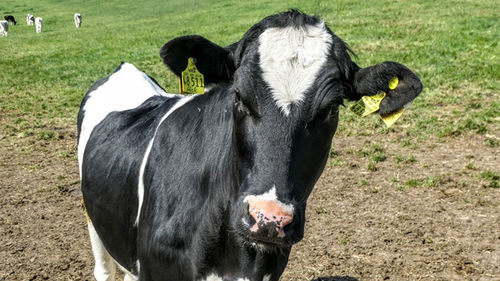Difference between revisions of "Leather sustainability and traceability"
(Created page with "<p align=center> 300px </p> Today, more and more customers are demanding sustainable production of the products they buy. In the context of d...") |
|||
| Line 4: | Line 4: | ||
| − | Today, more and more customers are demanding sustainable production of the products they buy. In the context of discussions about the way [[ | + | Today, more and more customers are demanding sustainable production of the products they buy. In the context of discussions about the way [[Exotic leather|animals]] are kept and [[leather production|leather is produced]], the traceability model of leather is discussed in order to be able to prove sustainability. |
| + | The idea behind it is a complete trace from the leather back to the animal whose [[Rawhide|skin]] was [[tanning|tanned]] for the leather. This means that the origin of the animal, the husbandry of the animal, the slaughter, the tanning and the processing into a leather object are documented in a completely transparent manner so that the consumer can ensure that with the purchase of his leather object he is supporting animal welfare-oriented animal husbandry, an environmentally friendly tanning process and socially acceptable working conditions in the [[tannery]], the leather processor and in retail. | ||
| + | Although there are legal regulations for animal husbandry, tanning and the [[tanner|employees]] in the chain, leather and/or leather objects often come from countries where the desired minimum standards are not observed or are not monitored at all. Traceability therefore requires information that goes beyond the legal national and international regulations. | ||
| − | + | For the traceability of the animals, barcodes, [[Natural markings on leather#Fire brand - hot brand|plastic markings]], or leather skin stamps are discussed and even DNA recordings are considered to ensure secure traceability. | |
| − | + | ||
| − | + | ||
| − | + | ||
| − | + | ||
| Line 22: | Line 20: | ||
<p> </p> | <p> </p> | ||
| − | + | So far, few leather processors (e.g. [[Leather quality#Seal of approval for leather|Identity Leder]]) have taken up the issue of traceability, as it involves a great deal of effort and expense and animal keepers and tanners are not yet sufficiently prepared to meet the necessary conditions. | |
Revision as of 19:09, 26 January 2023
Today, more and more customers are demanding sustainable production of the products they buy. In the context of discussions about the way animals are kept and leather is produced, the traceability model of leather is discussed in order to be able to prove sustainability.
The idea behind it is a complete trace from the leather back to the animal whose skin was tanned for the leather. This means that the origin of the animal, the husbandry of the animal, the slaughter, the tanning and the processing into a leather object are documented in a completely transparent manner so that the consumer can ensure that with the purchase of his leather object he is supporting animal welfare-oriented animal husbandry, an environmentally friendly tanning process and socially acceptable working conditions in the tannery, the leather processor and in retail.
Although there are legal regulations for animal husbandry, tanning and the employees in the chain, leather and/or leather objects often come from countries where the desired minimum standards are not observed or are not monitored at all. Traceability therefore requires information that goes beyond the legal national and international regulations.
For the traceability of the animals, barcodes, plastic markings, or leather skin stamps are discussed and even DNA recordings are considered to ensure secure traceability.
Ear tag of plastic for marking cattle.
So far, few leather processors (e.g. Identity Leder) have taken up the issue of traceability, as it involves a great deal of effort and expense and animal keepers and tanners are not yet sufficiently prepared to meet the necessary conditions.
Additional information
- Leather production
- Environmental protection
- The Blue Angel
- Seal of approval for leather
- NATURLEDER IVN certified
- Leather waste









 a kotori web solution
a kotori web solution